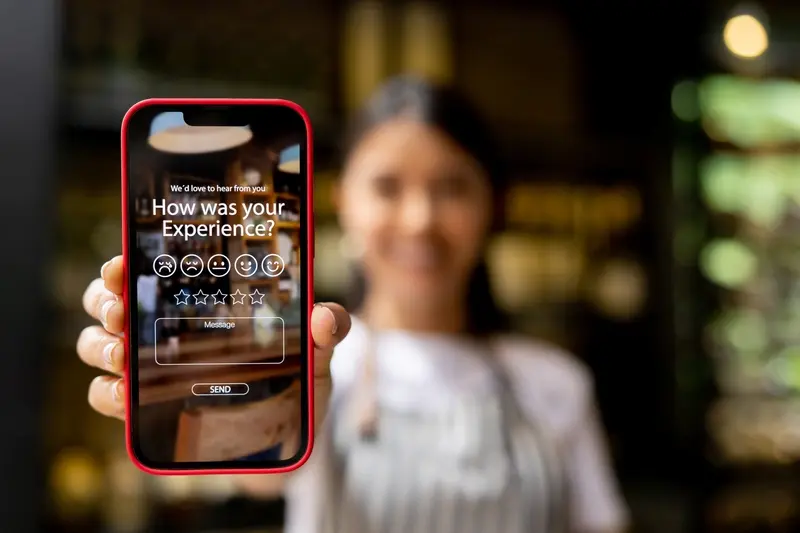Effective ASO Strategies for Different Business Models: Expert Guide
Over 8 million apps sit in the app stores right now, yet most of them might as well be invisible. The harsh reality? Without proper app store optimisation, your brilliant app could disappear into digital obscurity faster than you can say "download". That's what makes ASO strategies so critical—they're the difference between success and failure in the mobile app world.
Here's the thing though: there's no one-size-fits-all approach to app store optimisation. A gaming app needs completely different tactics compared to a subscription service or an e-commerce platform. The keywords that work for B2B apps won't necessarily boost visibility for freemium apps. And that's where many developers get it wrong—they apply generic ASO strategies without considering their specific business model.
The best app store optimisation strategy is the one that's tailored to how your users actually discover, download, and engage with your particular type of app
This guide breaks down the most effective ASO strategies for different business models. We'll explore what actually works for each type of app—from freemium and subscription apps to e-commerce platforms and B2B tools. You'll discover the specific tactics that drive app store ranking improvements and mobile app visibility for your particular situation, plus learn how to measure success with the right metrics.
Understanding Different Business Models and Their ASO Needs
Right, let's get something straight from the start—not all apps are created equal. I've worked with everything from simple utility apps to complex gaming platforms, and one thing I've learnt is that your business model completely changes how you should approach App Store Optimisation.
Think about it this way: a free gaming app needs thousands of downloads to make money from ads, whilst a premium business app might only need a few hundred paying customers to be profitable. These two apps need completely different ASO strategies, even if they're both brilliant at what they do.
Why Your Business Model Matters More Than You Think
Your business model determines everything—which keywords you target, what screenshots you show, how you write your app description, and even which reviews matter most. A subscription app needs to convince people it's worth paying for monthly; an e-commerce app needs to show it has products people actually want to buy.
The Big Five Business Models
From my experience, most successful apps fall into five main categories: freemium apps that convert free users to paid features, subscription apps that keep users paying monthly, e-commerce apps that sell products, gaming apps that monetise through various methods, and B2B apps that serve professional needs. Each one faces unique challenges in the app stores, and each one needs a tailored approach to succeed.
Freemium Apps: Converting Downloads into Premium Users
Freemium apps have a tricky challenge—getting people to download is just the beginning. The real work starts when users open your app for the first time. Your app store optimisation needs to attract the right people, not just anyone who'll download and delete within minutes.
When I work with freemium clients, I always tell them their app store listing should hint at the premium features without giving everything away. Screenshots showing locked premium content actually work well—they create curiosity rather than frustration. Your app description should focus on the free value first, then subtly mention what's possible with an upgrade.
Keywords That Convert Better
Target keywords that suggest ongoing use rather than one-time solutions. Words like "tracker," "planner," or "manager" attract users who expect to return regularly. These users are more likely to hit your free limits and consider upgrading.
Reviews become particularly important for freemium apps because potential users want to know if the free version is actually useful. Encourage happy free users to leave reviews—they're often more honest about the value than premium users who might feel obligated to justify their purchase.
Focus your app store optimisation on attracting users who need your app regularly rather than occasionally—they're far more likely to upgrade when they hit your free limits.
Subscription-Based Apps: Building Long-Term User Retention
Subscription apps face a unique challenge—they need to convince users not just to download, but to pay monthly or yearly for something they might not fully understand yet. Your App Store page becomes your sales pitch, and frankly, it needs to work harder than most other app types.
The biggest mistake I see with subscription apps is hiding the value proposition. Users want to know exactly what they're getting before they commit to paying. Your app description should clearly explain the benefits, not just the features. Instead of saying "unlimited access to premium content," try "watch exclusive shows, ad-free movies, and download content for offline viewing." See the difference?
Screenshots That Show Value
Your screenshots need to demonstrate the premium experience users will receive. Show the actual content, the clean interface without ads, and any exclusive features that subscribers get. Don't waste precious screenshot space on login screens or generic welcome messages.
Reviews Strategy for Subscriptions
Free trial users often leave reviews before converting to paid subscribers, which can hurt your ratings if they don't see immediate value. Consider prompting for reviews after users have experienced your premium features, not just after downloading. Happy paying customers write better reviews than confused trial users.
Remember, subscription apps live or die by user retention, so your ASO strategy should attract users who genuinely need what you're offering, not just bargain hunters looking for free trials.
E-commerce Apps: Driving Sales Through Discovery
E-commerce apps face a unique challenge—they need to attract shoppers who might not even know what they're looking for yet. Unlike other business models where users have a specific problem to solve, shopping apps succeed when they create desire for products people didn't know they wanted.
Your app store optimisation strategy should focus heavily on visual elements and product discovery keywords. Screenshots showing popular products, seasonal items, or trending categories work brilliantly here. I've seen e-commerce apps boost their conversion rates by 40% just by updating their screenshots to showcase what's currently popular rather than generic product grids.
Keywords That Convert Browsers into Buyers
Think beyond your brand name when choosing keywords for app store ranking. Target terms like "online shopping," "fashion deals," or "home decor" depending on your niche. These broader terms capture users in discovery mode—exactly where you want them.
The best e-commerce apps don't just sell products; they sell the experience of finding something perfect you didn't know existed
Your app description should highlight unique features like personalised recommendations, exclusive deals, or same-day delivery. Mobile app visibility increases when you solve the "why download another shopping app" question upfront. Reviews mentioning easy checkout, fast delivery, or great customer service become gold for your app marketing efforts.
Gaming Apps: Competing in the Most Crowded Category
Gaming apps face the toughest competition in any app store—there are literally millions of them! I've worked with gaming clients who've spent months perfecting their gameplay only to see their app disappear into the void because nobody could find it. The gaming category is brutal, but there are ways to stand out if you know what you're doing.
Screenshots That Show Real Gameplay
Your screenshots need to show actual gameplay footage, not fancy artwork or character portraits. Players want to see what they'll be doing when they open your app. Action shots work best—show explosions, victories, or key moments that make people think "I want to do that!" Your first screenshot is the most important one; make it count.
Keywords That Players Actually Search For
Gaming keywords are different from other app categories. Players search for things like "offline games", "no ads", "multiplayer", or specific game types like "match 3" or "battle royale". Don't waste keyword space on generic terms like "fun game"—everyone uses those. Focus on what makes your game special and what problems it solves for players.
Your app icon needs to work at tiny sizes because that's how most people will first see it. Bold colours and simple shapes perform better than detailed artwork that becomes a blur when shrunk down.
B2B Apps: Reaching Professional Audiences
B2B apps face a completely different challenge when it comes to app store optimisation—you're not trying to appeal to everyone scrolling through their phone on the sofa. Your audience is busy professionals who need solutions to real workplace problems, and they're searching with intent.
The keyword strategy for B2B apps needs to be laser-focused on industry-specific terms and job functions. Think "project management," "CRM mobile," "expense tracking," or "team collaboration" rather than broad consumer terms. These professionals know exactly what they're looking for, so your app store listing should speak their language.
Professional Screenshots and Descriptions
Your visual assets need to look polished and business-appropriate. Screenshots should demonstrate real workflows, not flashy graphics. Show how your app integrates with existing business tools or solves specific pain points that professionals face daily.
Focus your ASO efforts on long-tail keywords that include job titles or industry terms—B2B users search more specifically than consumers.
The Decision-Making Process
B2B app downloads often involve multiple stakeholders and longer consideration periods. Your app description should include information about security, compliance, and integration capabilities. Reviews from verified business users carry more weight than generic consumer feedback for mobile app visibility in the B2B space.
- Target industry-specific keywords in your ASO strategies
- Include compliance and security information in descriptions
- Showcase integration capabilities with popular business tools
- Use professional case studies in your app marketing materials
Measuring Success: KPIs That Matter for Each Business Model
After eight years of tracking app performance across different business models, I've learnt that measuring the wrong things can be worse than measuring nothing at all. Each business model needs its own set of key performance indicators—and trust me, downloads alone don't tell the whole story.
Business Model-Specific Metrics
Freemium apps should focus heavily on conversion rates from free to paid users, whilst subscription apps need to watch churn rates like hawks. E-commerce apps live and die by their conversion funnels and average order values. Gaming apps? Well, they're all about daily active users and session length—plus those all-important in-app purchase rates.
B2B apps operate differently again; they need to track trial-to-paid conversions and customer lifetime value. The sales cycles are longer, so monthly metrics might not give you the full picture.
Universal Metrics Worth Tracking
| Metric | Why It Matters |
|---|---|
| App Store Conversion Rate | Shows how well your listing converts browsers to downloads |
| Keyword Rankings | Tracks your visibility for target search terms |
| User Retention (Day 1, 7, 30) | Reveals how sticky your app really is |
| Organic vs Paid Downloads | Measures ASO effectiveness against paid campaigns |
The trick is setting up proper attribution so you can see which ASO changes actually move the needle. Without that data, you're just guessing about which ranking factors actually move the needle.
Conclusion
After working with countless apps across different business models, I can assure you that app store optimisation is anything but a one-size-fits-all exercise. The tactics that drive freemium productivity apps to the top rarely translate to success for subscription streaming platforms or enterprise B2B solutions.
The key takeaway is this: your ASO strategy must be explicitly shaped by your business model and your users’ journey—from discovery through to long-term engagement. Tailoring your approach not only increases your visibility but ensures you attract the right users and drive meaningful results. In a marketplace defined by competition and constant change, the apps that win are those that continually refine their ASO strategy to match both evolving user behaviour and business objectives. Adapt, measure relentlessly, and stay attuned to your audience—because effective app store optimisation is not a one-off effort, but an ongoing commitment to growth.
Share this
Subscribe To Our Learning Centre
You May Also Like
These Related Guides

How Do I Measure If My App Influencer Campaign Actually Worked?

How Do I Get More Downloads From My App Store Page?



